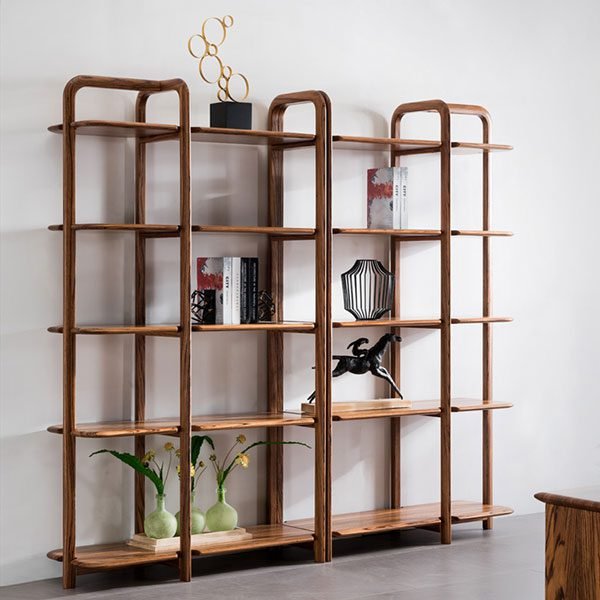Revitalize your sofa with new cushions!
Choosing the Right Foam Density for Sofa Cushion Replacement
When it comes to replacing sofa cushions, one of the most important factors to consider is the foam density. The density of the foam determines the level of support and comfort that the cushions will provide. Choosing the right foam density is crucial to ensure that your new cushions are not only comfortable but also durable.
Foam density is measured in pounds per cubic foot (PCF). The higher the PCF, the denser the foam. Generally, foam densities range from 1.2 PCF to 3.0 PCF. The ideal foam density for sofa cushions depends on various factors, including the type of sofa, the intended use, and personal preferences.
For sofas that are used frequently, such as in a living room or family room, it is recommended to choose a higher foam density. A foam density of 2.0 PCF or higher is suitable for these types of sofas as it provides excellent support and durability. This density ensures that the cushions will retain their shape and bounce back after each use.
On the other hand, if the sofa is used less frequently, such as in a formal sitting area or a guest room, a lower foam density can be chosen. A foam density of 1.5 PCF to 1.8 PCF is sufficient for these types of sofas. While they may not offer the same level of support as higher density foams, they still provide adequate comfort for occasional use.
Another factor to consider when choosing foam density is the type of sofa. Different types of sofas require different levels of support. For example, a sofa with a deep seat may require a higher foam density to provide proper support for the body. On the other hand, a sofa with a shallow seat may be more comfortable with a lower foam density.
Personal preferences also play a role in choosing the right foam density. Some people prefer a firmer cushion, while others prefer a softer one. It is important to consider your own comfort preferences when selecting the foam density. If possible, try sitting on sofas with different foam densities to determine which one feels the most comfortable for you.
In addition to foam density, it is also important to consider the foam’s compression rating. The compression rating indicates how much weight the foam can support before it starts to lose its shape. A higher compression rating means that the foam will retain its shape for a longer period of time. For sofa cushions, a compression rating of 30 to 40 is recommended to ensure durability and longevity.
In conclusion, choosing the right foam density for sofa cushion replacement is essential to ensure comfort and durability. Factors such as the type of sofa, intended use, and personal preferences should be taken into consideration. For frequently used sofas, a higher foam density of 2.0 PCF or higher is recommended, while for less frequently used sofas, a lower foam density of 1.5 PCF to 1.8 PCF is sufficient. It is also important to consider the compression rating of the foam to ensure long-lasting cushions. By carefully considering these factors, you can find the perfect foam density for your sofa cushions and enjoy comfortable seating for years to come.
Step-by-Step Guide to Measure and Order Custom Sofa Cushions
Replacing sofa cushions can be a great way to refresh the look and comfort of your living room furniture. Whether your current cushions are worn out, sagging, or simply not to your liking, ordering custom sofa cushions can provide a solution. In this step-by-step guide, we will walk you through the process of measuring and ordering custom sofa cushions, ensuring a perfect fit for your furniture.
The first step in replacing your sofa cushions is to measure the dimensions of your current cushions. Start by measuring the length and width of the cushion, making sure to measure from seam to seam. Take note of these measurements, as they will be crucial when ordering your new cushions. Additionally, measure the thickness of the cushion, as this will determine the level of comfort and support you desire.
Once you have your measurements, it’s time to choose the type of cushion filling you prefer. There are various options available, including foam, down, and polyester. Foam cushions are known for their durability and support, while down cushions offer a luxurious and soft feel. Polyester cushions are a more affordable option and provide a good balance between comfort and durability. Consider your personal preferences and budget when making this decision.
After selecting the cushion filling, it’s time to choose the fabric for your new cushions. Consider the style and color scheme of your living room when making this decision. Opt for a fabric that complements your existing furniture and decor. Additionally, consider the durability and maintenance requirements of the fabric. If you have pets or children, a stain-resistant and easy-to-clean fabric may be a wise choice.
With your measurements, cushion filling, and fabric chosen, it’s time to order your custom sofa cushions. Many online retailers offer custom cushion services, allowing you to input your measurements and select your desired options. Ensure that the retailer you choose has a good reputation and provides accurate and reliable measurements. It may be helpful to read customer reviews or seek recommendations from friends or family.
When placing your order, double-check your measurements and specifications to avoid any mistakes. It’s also a good idea to inquire about the retailer’s return policy in case the cushions do not fit as expected. Once your order is placed, patiently wait for your new cushions to arrive.
When your custom sofa cushions arrive, carefully remove the old cushions from your sofa and replace them with the new ones. Take your time to ensure a proper fit, adjusting the cushions as needed. Sit on the sofa and test the comfort and support of the new cushions. If necessary, make any adjustments or contact the retailer for assistance.
In conclusion, replacing sofa cushions can be a simple and effective way to enhance the look and comfort of your living room furniture. By following this step-by-step guide, you can measure and order custom sofa cushions that perfectly fit your needs and preferences. Remember to take accurate measurements, choose the right cushion filling and fabric, and order from a reputable retailer. With your new cushions in place, you can enjoy a refreshed and inviting living room space.
DIY Upholstery: Replacing Sofa Cushions Made Easy
Replacing sofa cushions can be a simple and cost-effective way to give your old sofa a fresh new look. Over time, sofa cushions can become worn out, saggy, or stained, making your sofa look tired and uncomfortable. However, with a little bit of DIY upholstery, you can easily replace your sofa cushions and bring new life to your favorite piece of furniture.
The first step in replacing sofa cushions is to measure the dimensions of your existing cushions. This will ensure that you purchase the correct size replacements. Using a tape measure, measure the length, width, and depth of each cushion. It’s important to be as accurate as possible to ensure a snug fit.
Once you have your measurements, it’s time to choose the right type of foam for your new cushions. Foam comes in various densities and thicknesses, so it’s important to select the one that best suits your comfort preferences. High-density foam is a popular choice as it provides excellent support and durability. However, if you prefer a softer feel, you may opt for a medium-density foam. It’s also worth considering adding a layer of batting on top of the foam for extra comfort.
After selecting the foam, it’s time to remove the old cushions from your sofa. Most sofa cushions are attached with zippers or Velcro, making them easy to remove. Carefully unzip or detach the cushions and set them aside. Take this opportunity to inspect the condition of the cushion covers. If they are still in good shape, you can reuse them. However, if they are worn or stained, it’s a good idea to replace them as well.
With the old cushions removed, it’s time to cut the new foam to size. Using a sharp utility knife or an electric carving knife, carefully cut the foam to match the dimensions of your old cushions. Take your time and make precise cuts to ensure a professional-looking result.
Once the foam is cut, it’s time to insert it into the cushion covers. Start by placing the foam inside the cover and gently push it into the corners. If the foam is slightly larger than the cover, you can compress it slightly to fit. However, be careful not to overstuff the cushions as this can cause them to look lumpy or uneven.
Once the foam is securely inside the cushion covers, it’s time to close them up. If your cushion covers have zippers, simply zip them closed. If not, you can use a needle and thread to sew them shut. Be sure to use a strong thread and make small, even stitches to ensure a secure closure.
Finally, it’s time to place your newly replaced cushions back on your sofa. Arrange them neatly and fluff them up to give your sofa a fresh, inviting look. Sit back and enjoy the comfort and beauty of your newly upholstered sofa.
In conclusion, replacing sofa cushions is a DIY upholstery project that can easily be done at home. By measuring your existing cushions, selecting the right foam, and carefully cutting and inserting the foam into new cushion covers, you can give your sofa a fresh new look. With a little bit of time and effort, you can transform your old, worn-out sofa into a comfortable and stylish piece of furniture.
Conclusion
To replace sofa cushions, follow these steps:
1. Measure the dimensions of the existing cushions to ensure the new ones will fit properly.
2. Choose the type of cushion filling based on your preferences and budget, such as foam, down, or polyester fiberfill.
3. Remove the old cushions from the sofa by unzipping or detaching them.
4. If the cushion covers are removable, wash them according to the care instructions.
5. Place the new cushion filling into the cushion covers, ensuring an even distribution.
6. Zip or attach the cushion covers back onto the sofa.
7. Fluff and adjust the cushions as needed to achieve the desired comfort and appearance.
In conclusion, replacing sofa cushions involves measuring, choosing the right filling, removing the old cushions, washing the covers (if applicable), inserting the new filling, and reattaching the covers.



